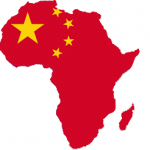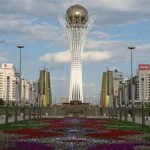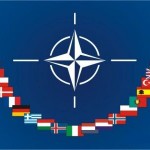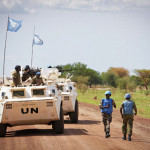January 30, 2010 – Jeffrey R. Dwiggins, Copyright, Kapok Tree Diplomacy –
FREE CONTENT
The Extent That Theories of Cooperation Harmonize With Reality in Contemporary International Relations
International relations theorists have presented distinctly different views on both the prospects for cooperation among states and the environmental and structural constraints impeding it for decades. This essay will explain and analyze the main views put forth in Robert Keohane‘s Regime and Complex Interdependency Theory, Bruce Russett’s Democratic Peace Theory, David Held’s democratization of global politics, and conclude with Robert Jervis’s ideas on the effectiveness of creating institutions to increase cooperation.
The views of Jervis will bring us full circle with realist and neo-realist views of cooperation. Throughout the essay, I will assess to what extent the arguments of these theorists are convincing. Do these theories of cooperation harmonize with reality in contemporary international relations? The following essay will explain how and why they do, and in other cases how and why they do not.
Theories of Cooperation
Keohane – Regimes and Complex Interdependency Theory. Keohane defines cooperation as occurring when “actors adjust their behavior to the actual or anticipated preferences of others, through a process of policy coordination” (“Cooperation” 491). The definition leaves some room for why actors would adjust their behavior at all. Keohane implies that the answer is found in mutual interests that are of equal importance (“Cooperation” 490). When such mutual interests are present, actors will want to bargain and negotiate as opposed to the manipulation and coercion that prevail under divergent interests and lead to strife.
In contrast, Joseph Grieco states the realist view that “international anarchy fosters conflict and competition among states and inhibits their willingness to cooperate even when they share common interests” (“Anarchy” 485). Grieco points out that liberals have gravitated to institutions to deal with this anarchic restraint (486). We see in Keohane’s theory a potential solution to mitigate the fears of cheating and unequal gains (“Promise”).
Keohane cites Krasner’s definition of regimes as “sets of implicit or explicit principles, norms, rules and decision-making procedures around which actors’ expectations converge in a given area of international relations” (“Cooperation” 495). Some examples would include Salt II (security regime), the World Trade Organization (economic regime), and Basel Convention (environmental regime).
Keeohane sees regimes as intermediate variables that can facilitate collaboration and provide a means to deal with predictable patterns of needs brought about by the anarchic system of self-help (“Cooperation” 497-500). He asserts that regimes “will be shaped largely by their most powerful members” (499). This is compatible with structural realism. Although liberals and realists share anarchic assumptions, they differ slightly on their application to regimes. According to Richard Little, realists use regimes mainly for “coordination” to meet strategic security objectives (306). Little says liberal institutionalists use them more as Keohane envisioned, “collaborating” and reinforcing the principle of reciprocity with a broader set of objectives that may include commerce or humanitarian goals (304-305).
The theory of complex interdependence goes beyond the concept of regimes by pointing to an intricately woven, asymmetrical framework of mutual dependence among states and non-state actors where “there are reciprocal, costly effects of transactions” (“Complex” 505) that lead to sources of power other than military power. The sources are defined as “control over resources, or the potential to affect outcomes” (“Complex” 507). The OPEC cartel is an example of a non-state actor who controls resources (petroleum) and has the potential to affect outcomes by making significant changes in production.
Keohane and Nye add the concept of “multiple channels” to their theory such as NGOs (non-governmental organizations), IGOs (inter-governmental organizations) and government agencies, an “absence of hierarchy among issues” that goes beyond military domination, and a reduced role for the military when complex interdependence is present. He departs from realist assumptions of force being an effective policy instrument and lays out complex processes of agenda formation influenced by non-state actors and a reduced role for military issues when other goals may be reached via collaboration (“Complex” 512-515).
The net result according to Keohane and Nye are effective “linkage strategies” between non-military interests on a domestic or transnational level due to reduced global military threats and the proliferation of “transnational and transgovernmental relations” that blur the identity and hierarchy of state goals as “national interests will be defined differently on different issues, at different times, and by different governmental units” (“Complex” 518).
Do Keohane and Nye’s regime and complex interdependency theories comport with reality, and are they convincing? Concerning regimes, I submit that we use the Copenhagen Accord as an example. The regime principle put forth is that reducing greenhouse gas emissions is a good thing for the environment and will diminish global warming. Many nations gathered in Copenhagen to try and secure binding restrictions on emissions. The Accord failed in that respect. Ben Lieberman asserts, “In fact, all that the Copenhagen accord contains is vague aspirational language to the effect that it would be nice if each country decided on its own to reduce emissions” (“Copenhagen”).
Moreover, it appears that for the United States and China specifically, economic interests prevailed over environmental concerns. The results reflect more of the realist assumptions of competition than Keohane’s collaborative and cooperative assumptions. In other regimes like GATT, collaboration does seem to have worked better, having resulted in the formation of the World Trade Organization (Little 300).
Regarding complex interdependency theory, I would have to agree that there are more channels than ever to work through. More channels mean more diverse agendas driven by more diverse interests. Steven Weber notes that the number of IGOs went from 37 in 1909 to 337 in 1986 (“Institutions” 231). Susan Strange reports the number of NGOs was over 4,500 by the late 80’s. Additionally, one can see in the United States that issues like health care, the economy, education, immigration and energy issues have shared prominent spots on the national agenda at various times and seasons.
On these issues, Keohane’s principles seem to have merit. However, escalating circumstances in Afghanistan, Iran, Iraq, North Korea and Yemen seem to suggest that military issues have not been put on the back burner, nor will they anytime soon. The linkage strategies seem plausible, but in reality a state may be more concerned about relative gains made by other states. Grieco confirms this by noting, “Cooperation would therefore be unattractive to this state in direct proportion to its belief that the two issue areas were inter-related” (“Anarchy” 506). While regimes and complex interdependencies may promote iterative compliance, states may over-rule or side-step regimes when national security is threatened or costs are too high. Contemporary world events suggest that the threat of military force has not abated, though regimes and complex interdependencies have increased.
Russett – Democratic Peace Theory. In “Why Democratic Peace?” Russett begins by arguing that transnational and international institutions, geographical distance, alliances, wealth, and political stability do not comprehensively secure peace and deter war on their own (377-383). Russett develops a “cultural/normative” model based on the “culture, perceptions, and practices that permit compromise and the peaceful resolution of conflicts without the threat of violence” (385). Russett points to democratic principles like legitimate rule based upon the consent of the governed, the idea of “live-and-let-live,” and respect for the rule of law that help democracies resolve conflict, while explaining that autocratic nations don’t share these values and tend to resolve conflict with violence (383-387).
Russett reasons that democratic norms and culture will result in violent conflicts being rare “between democracies but more frequent between nondemocracies, and between democracies and nondemocracies” (388).
A “structural/institutional” model is also developed by Russett based upon additional constraints typical of democracies such as the system of checks and balances, the need to ensure widespread public support for wars, and the extended time needed to filter mobilization decisions and actions through systemic layers (392). Not requiring the consent of the governed or being tied down by similar institutional constraints, the nondemocracy is more nimble and can launch attacks quicker and more efficiently (392). Additionally, Russett indicates that nondemocracies “may press democracies to make greater concessions,” but democracies may in turn decide in favor of violent conflict than give in to concessions (392).
I find Russett’s arguments to be very convincing when one looks at the most recent wars to include the Korean War, Vietnam War, and the first and second wars in Iraq. All of these wars had a nondemocracy as a major participant. Both the cultural/normative and structural/institutional models make compelling cases to reduce the likelihood of war through cooperation. If democracies do not fight each other, it would seem logical to try and build a security community of democratic states, NATO being a good example. Realist assumptions of anarchy and self-help present the challenge that peace cannot be sustained in a world driven by the thirst for power and survival. However, a long-term view that increased democratization can reduce the likelihood of conflict may have merit if the cultural norms and structural principles can be deeply imbedded into newly developing democracies.
Held – Democratization of Global Politics. David Held puts forth the idea of a “cosmopolitan model of democracy” (Dunne 119) that takes into account the increased level of interconnectedness (globalization) in the world. He asserts that people have “citizenship” in multiple communities to include global, regional, national, state and local, and that certain issues correspond to being handled better in certain communities (28-30). For example, AIDS would be better handled at a global level and local trash pick-up at the city government level. With more communities, you also have more non-state actors.
Because each community realm has their own set of interests, the aggregate interests of nation-states are multi-faceted according to Held, thus requiring a more collaborative and institutional approach to governance (28-30). Held prescribes an “overarching democratic framework” that would reform the Security Council of the UN (different veto structure based on multiple interests), create an international human rights court, reform the structure of the UN to make it more democratic, and constitute a new international security force for the “enforcement of regional and global order” (28-30). Held’s new world order relies upon the rule of law administered by multilateral institutions, as opposed to unilateral actions, military force and free markets to secure the peace (28-30).
I would agree with Held that the development of new institutions, or the reform of old ones like the UN, must be commensurate to the increasing challenges of globalization and diverse interests of non-state actors. These new collaborative channels provide effective mechanisms for dealing with issues like the environment, economic issues and social justice issues. However, I am skeptical of Held’s cosmopolitan military force being able to effectively intervene in major military conflicts or territorial disputes. Nations are reluctant to spill their own blood unless their own interests are at stake. On the other hand, unilateral military actions might diminish under pressure from a reformed UN Security Council, but its reformation seems unlikely given the reluctance of the five major players to cede control.
Jervis – Increasing Cooperation Through Institutions. Jervis assesses the prospects for international cooperation by pointing out that “neoliberalism believes there is much more unrealized or potential cooperation than does realism, and the schools of thought disagree about how much conflict in world politics is unnecessary or avoidable” (47). So how might nation-states tap into this unrealized and potential cooperation through institutions?
Firstly, Jervis proposes that institutions represent “binding and self-binding tools” that make it more costly and problematic to back out of international commitments, thus linking policy and interests in a cooperative context (55). Secondly, Jervis points to the role of institutions as “innovative tools” that help nation-states resolve current problems based on the ability to learn from and draw upon past knowledge accumulated through iterative use of institutional cooperation (57-58). Thirdly, he suggests that institutions can change preferences over outcomes (58-62). Using NATO and the European Union (EU) as examples, Jervis demonstrates that these institutions took on a “life of their own” in shaping interests by “changing beliefs about what is possible and desirable” (60) and giving “voice, legitimacy and forms of influence to weak or new actors” (61).
The arguments put forth by Jervis are convincing on two counts. For one they do harmonize with reality in contemporary international relations. The UN, NATO and EU do act on some level as binding and self-binding tools, innovative tools that have learned from world wars, and interest and preference shaping tools that create incentives. Secondly, they remain viable arguments regardless of theory or structural constraints.
Conclusion
Institutions may assist realists with power and goal acquisition, neo-realists with the means to acquire relative gains and move up positionally within the global arrangement, and neoliberals with achieving absolute gains and accounting for non-state actors’ preferences.
Neither structural constraints nor uncertainty over the future should limit the potential for greater international cooperation. Keohane, Russett, Held and Jervis give us plenty of ideas that may unlock unrealized and potential cooperation. While none resolve the threat of violent conflict individually, together they have power to open up cooperative channels of mutual interests, shape preferences, reduce the likelihood of violence and change outcomes.
Works Cited
Dunne, Tim. “Liberalism.” The Globalization of World Politics: An Introduction to International Relations. 4th ed. Ed. Baylis, John, Steve Smith and Patricia Owens. New York: Oxford University Press, 2008. Print.
Grieco, Joseph. “Anarchy and the Limits of Cooperation: A Realist Critique of the Newest Liberal Institutionalism.” International Organization 42.3 Summer 1988. 485-507. Web. 30 Jan 2010. Academic Search Premier. Retrieved at Norwich University Library.
Held, David. “How to Rule the World.” New Statesman 126.4349 1997. 28-30. Web. 30 Jan 2010. Academic Search Premier. Retrieved at Norwich University Library.
Jervis, Robert. “Realism, Neorealism, and Cooperation.” International Security 24.1 Summer 1999. 42-63. Web. 30 Jan 2010. Academic Search Premier. Retrieved at Norwich University Library.
Keohane, Robert O. and Joseph S. Nye. “Complex Interdependence.” Understanding International Relations: The Value of Alternative Lenses, 5th ed. Ed. Kaufman, Daniel J., et al. United States Military Academy: The McGraw-Hill Companies, Inc., 2004. Print.
Keohane, Robert O. “Cooperation and International Regimes.” Understanding International Relations: The Value of Alternative Lenses, 5th ed. Ed. Kaufman, Daniel J., et al. United States Military Academy: The McGraw-Hill Companies, Inc., 2004. Print.
—. “The Promise of Institutional Theory.” International Security 20.1 Summer 1995. 45. Web. 30 Jan 2010. Academic Search Premier. Retrieved at Norwich University Library.
Lieberman, Ben. “The Copenhagen Conference: A Setback for Bad Climate Policy in 2010.” Issues: Energy and Environment. 19 Jan 2010. Heritage Foundation, Web. 30 Jan 2010. <http://www.heritage.org/Research/EnergyandEnvironment/sr0075.cfm
Little, Richard. “International Regimes.” The Globalization of World Politics: An Introduction to International Relations. 4th ed. Ed. Baylis, John, Steve Smith and Patricia Owens. New York: Oxford University Press, 2008. Print.
Russett, Bruce. “Why Democratic Peace?” The Globalization of World Politics: An Introduction to International Relations. 4th ed. Ed. Baylis, John, Steve Smith and Patricia Owens. New York: Oxford University Press, 2008. Print.
Weber, Steven. “Institutions and Change.” New Thinking in International Relations Theory. Ed. Doyle, Michael W. and G. John Ikenberry. Boulder, CO: Westview Press, 1997. Print.





Leave a Reply